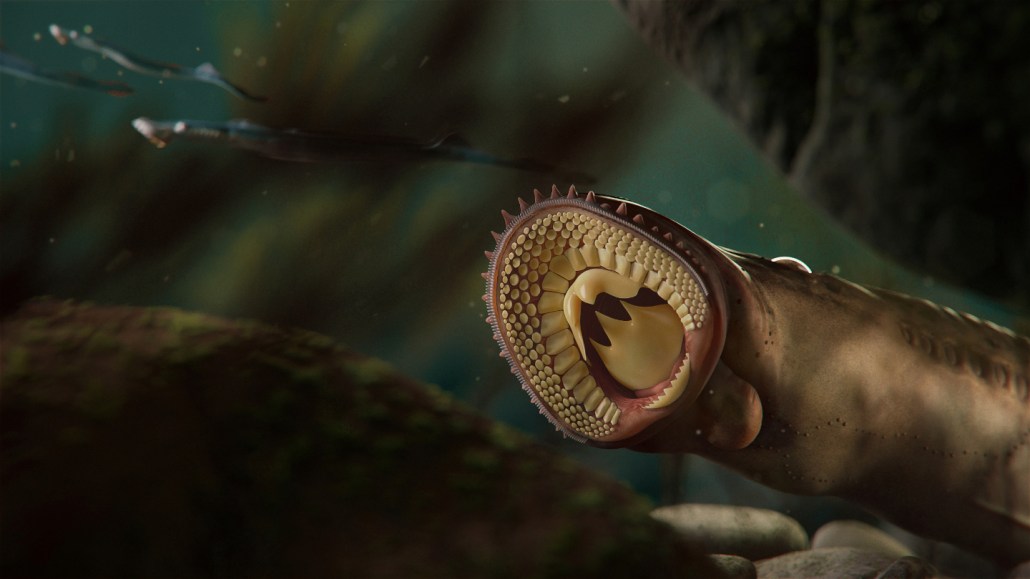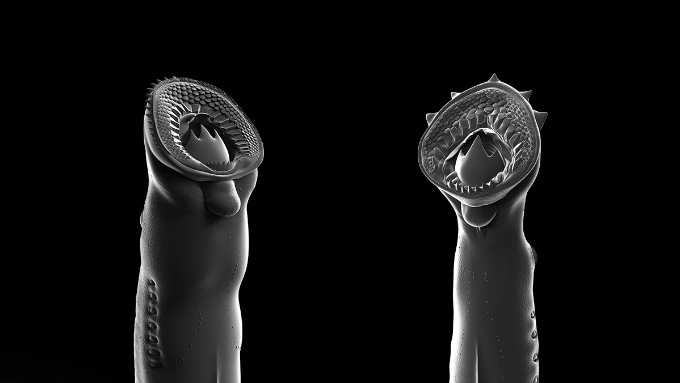Newfound fossil species of lamprey were flesh eaters
The modern kin of these dinosaur contemporaries can consume either blood or flesh

Yanliaomyzon ingensdentes, shown in this artist’s rendition, is one of two newly discovered species of flesh-eating lamprey found in 160-million-year-old rocks.
Heming Zhang








